Placement Guide
Placement Guide
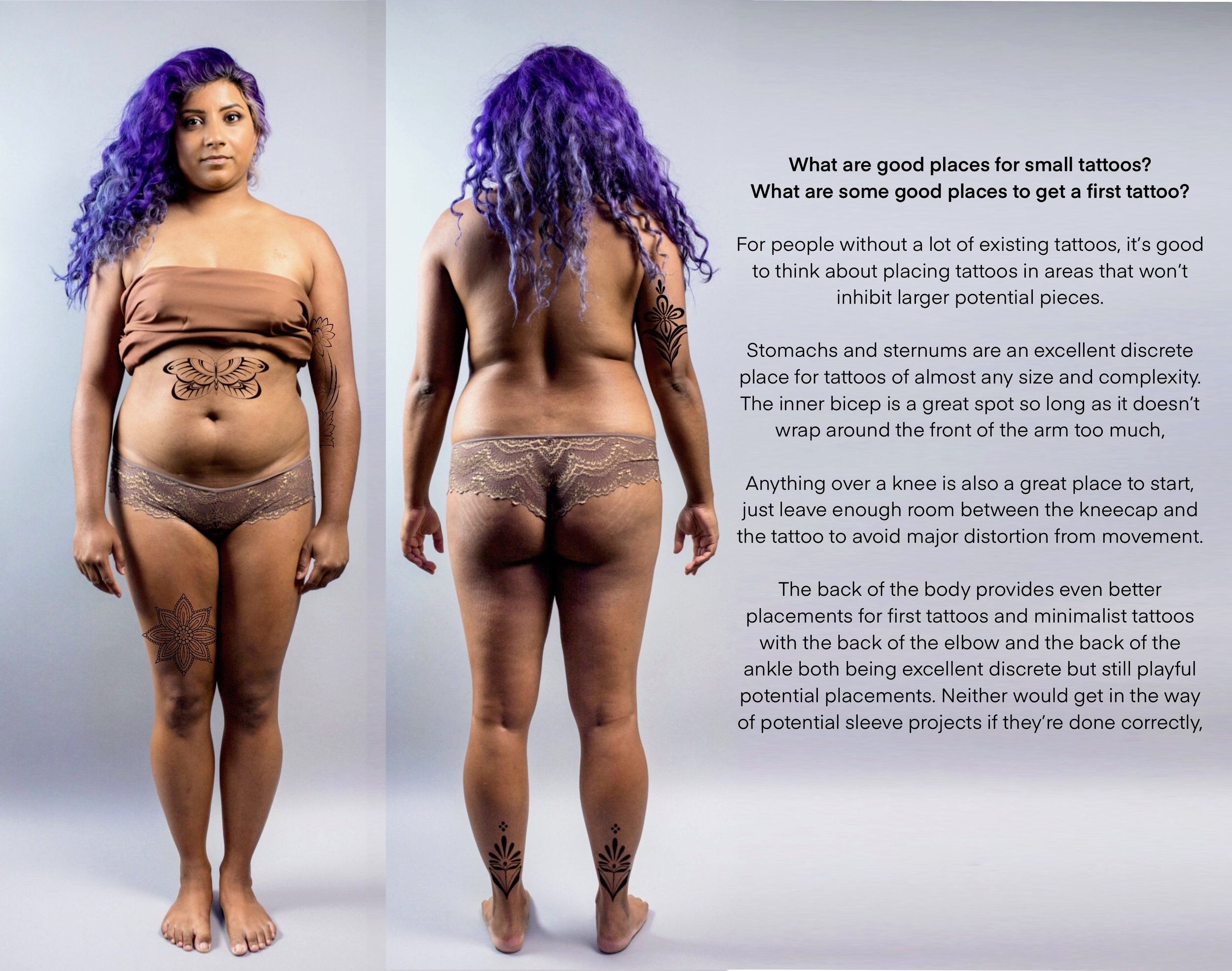
Small Tattoos
For people who are not looking for extensive coverage, or who are just stepping into getting their first tattoos this guide is for you. For tattoos that make less of a visual impact, the biggest consideration is to put the tattoo somewhere where it will age well, be big enough to read correctly, and where it won’t impede any future larger projects. Aside from the spots that are mentioned in the graphics, it can be good to consider spots on the ribs, back of neck, or top of chest for a smaller tatttoo that can still be a statement piece.
all photos are courtesy of Dwam Ipomée
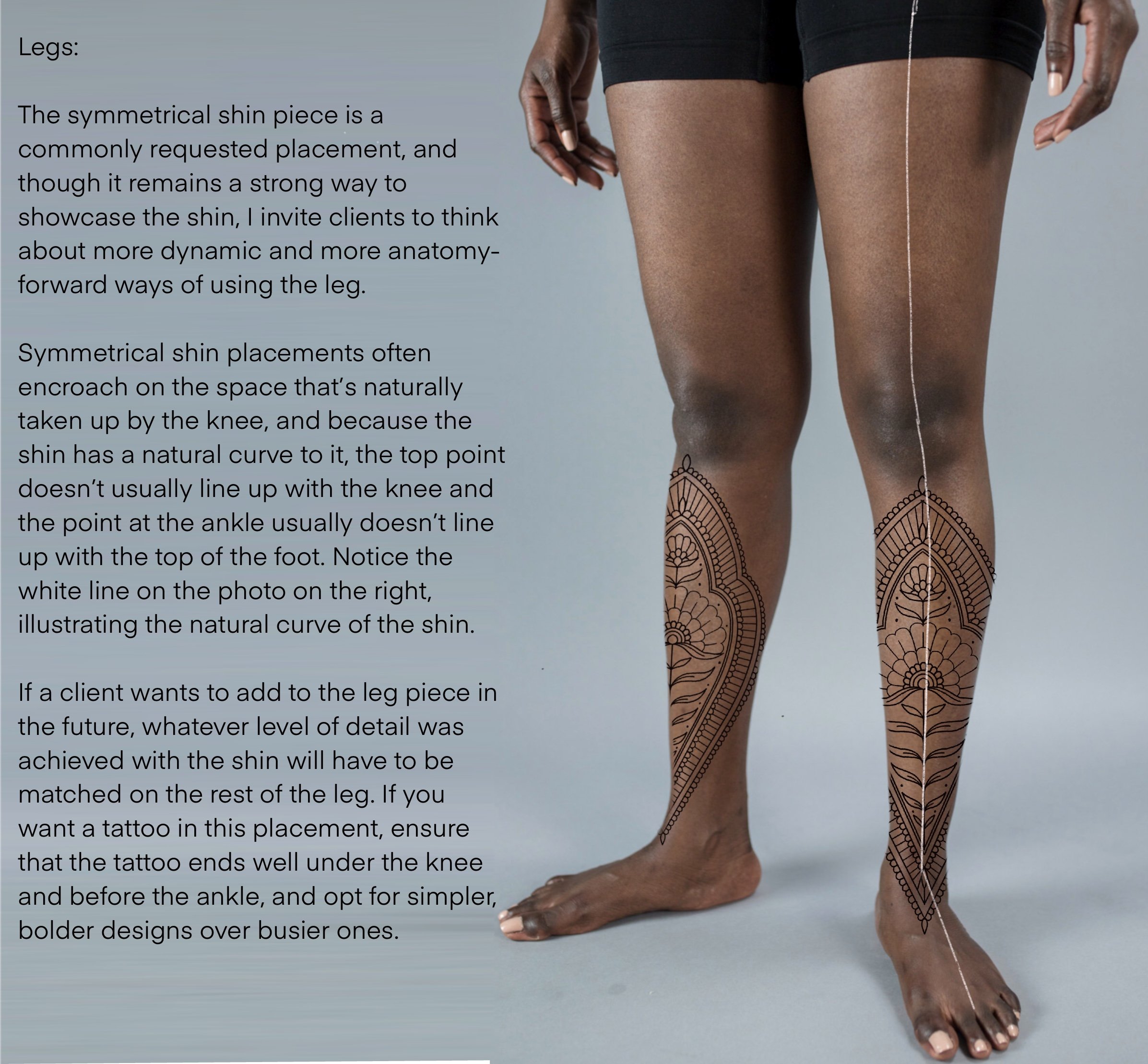
Shin Pieces
Symmetrical shin pieces are a common request but clients are sometimes disappointed by the limitations of the space. If you’re thinking of building your shin piece into a leg sleeve it’s likely better to make the knee the focal point of your leg rather than the shin, and use the sides of the shin to build movement instead.
all photos of models courtesy of Dwam Ipomée
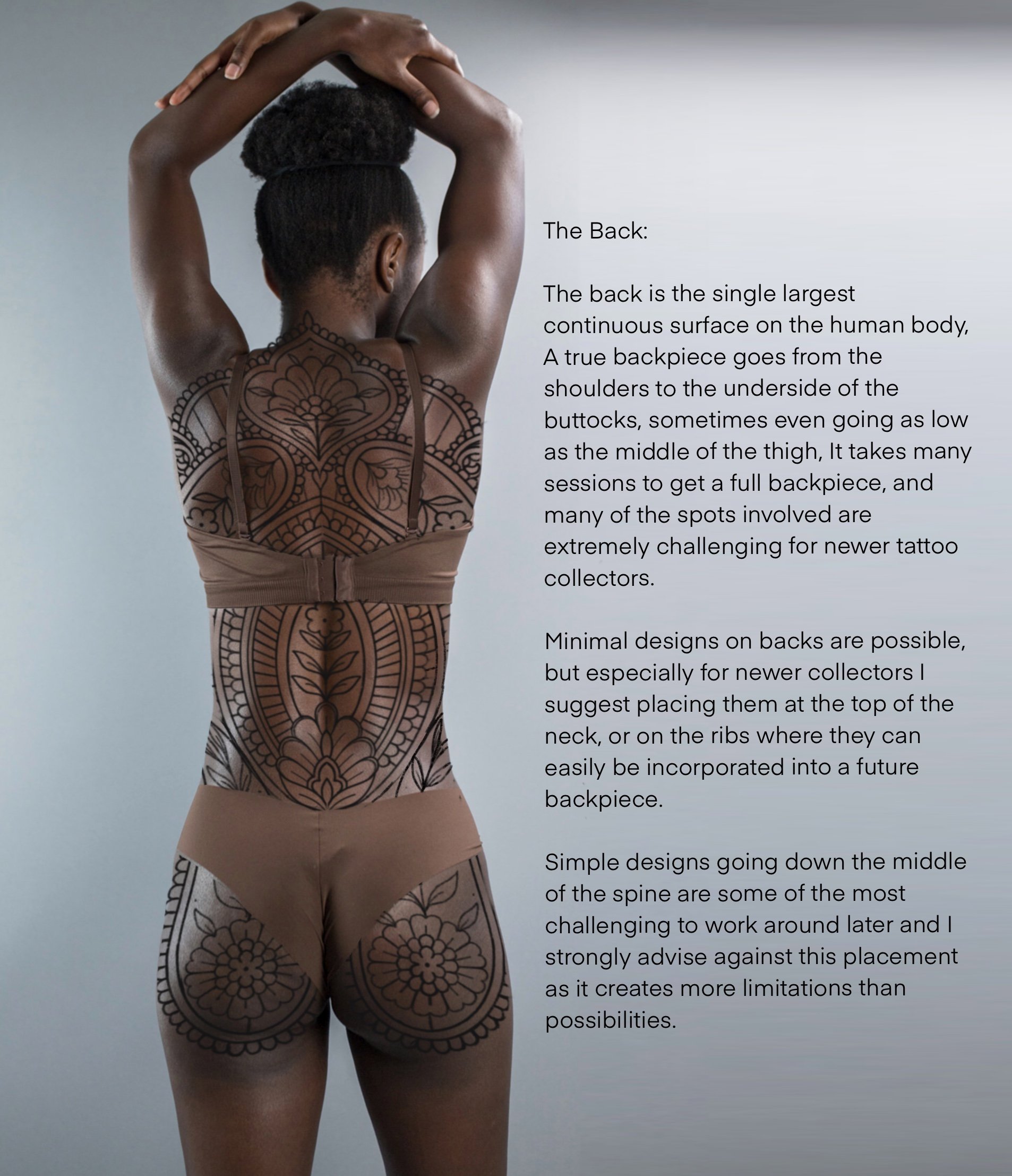
Backpieces
Backpieces are a serious time and financial commitment for any collector, it’s a privilege as a tattooer to be asked to do one and it’s not to be taken lightly by either party. They’re also extremely challenging to sit through especially for bolder ornamental work, and although we do have some tools at our disposal to make the process doable for most clients, it’s advisable to have at least a few tattoos under your belt before undertaking something like a full backpiece. I get frequent requests for backpieces that exclude the buttocks or that end mid back, and although I understand the temptation, I only undertake backpieces that use the whole back. That being said, Rome wasn’t built in a day and neither was anyone’s backpiece. The buttocks get tattooed at the end usually, after several sessions spanning a few months on the upper back so there’s plenty of time to settle on exactly what the buttocks will be and how they’ll fit into the piece.
As my mentor Doug often says, “you don’t want baboon bum” -referring to what happens when people have fully covered backs and legs but nothing on the bum.
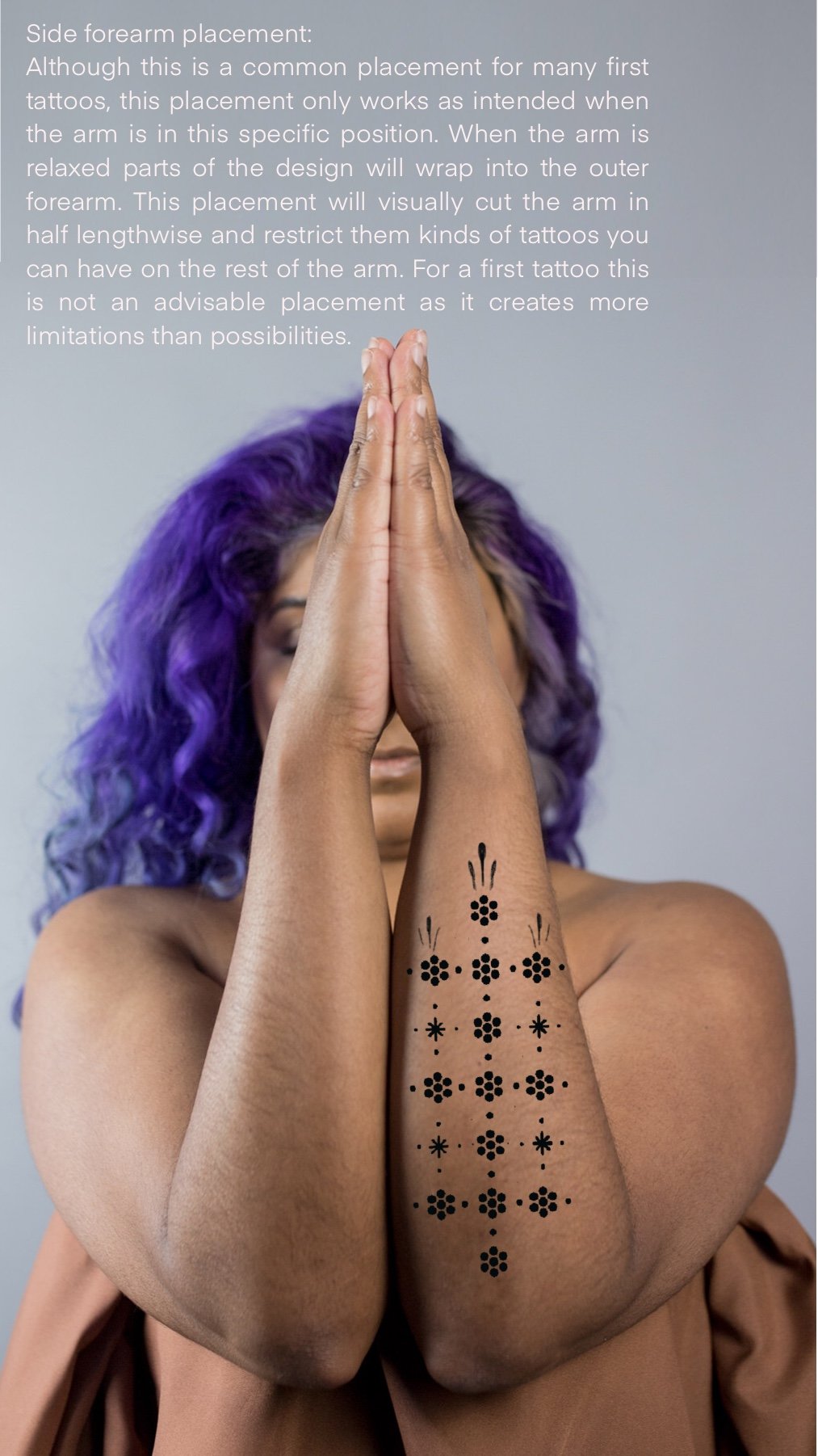
Arms
Placing tattoos lengthwise along the forearm is a commonly requested placement for minimalist tattoos or smaller tattoos but it tends to cause a lot of problems later as clients try to expand their collections. Doing tattoos that wrap around the forearm like an arm band creates the same visual problem but the arm is visually “cut” in the opposite direction. It’s generally considered better practice to do long designs similar to the example on the inner bicep where it will interfere less with potential future tattoos. In the case of arm bands, it’s generally considered best to start arm bands at the wrist rather than just below or just above the elbow as these placements are prone to a lot more distortion from movement.

Forearms
Illustration shows the problem with doing symmetrical designs on forearms. Conversely, putting a symmetrical design on the inner forearm poses a more challenging situation for the design process in that the wrap of the design would show a part of the design when the arm is in a neutral position. This is generally inadvisable if the client has no tattoos on their arm previously.
photos of models are by Dwam Ipomée
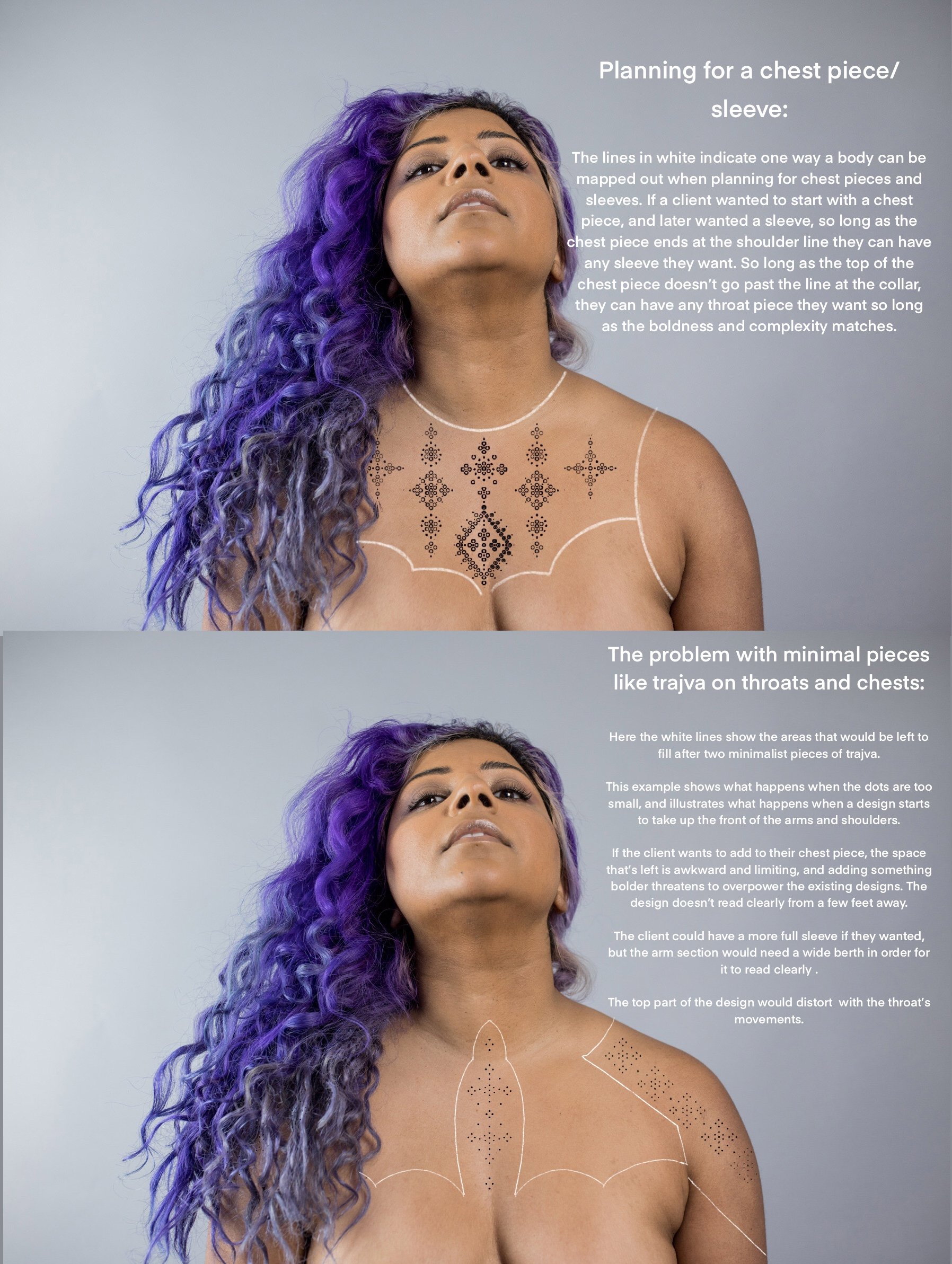
Trajva
These are my guidelines for proportioning trajva, this graphic shows why I stay away from doing barely visible dots as trajva and why I stay closer to the bolder tradition of the style. As well, I wanted to illustrate where I start and finish chest pieces to accommodate future sleeves.
